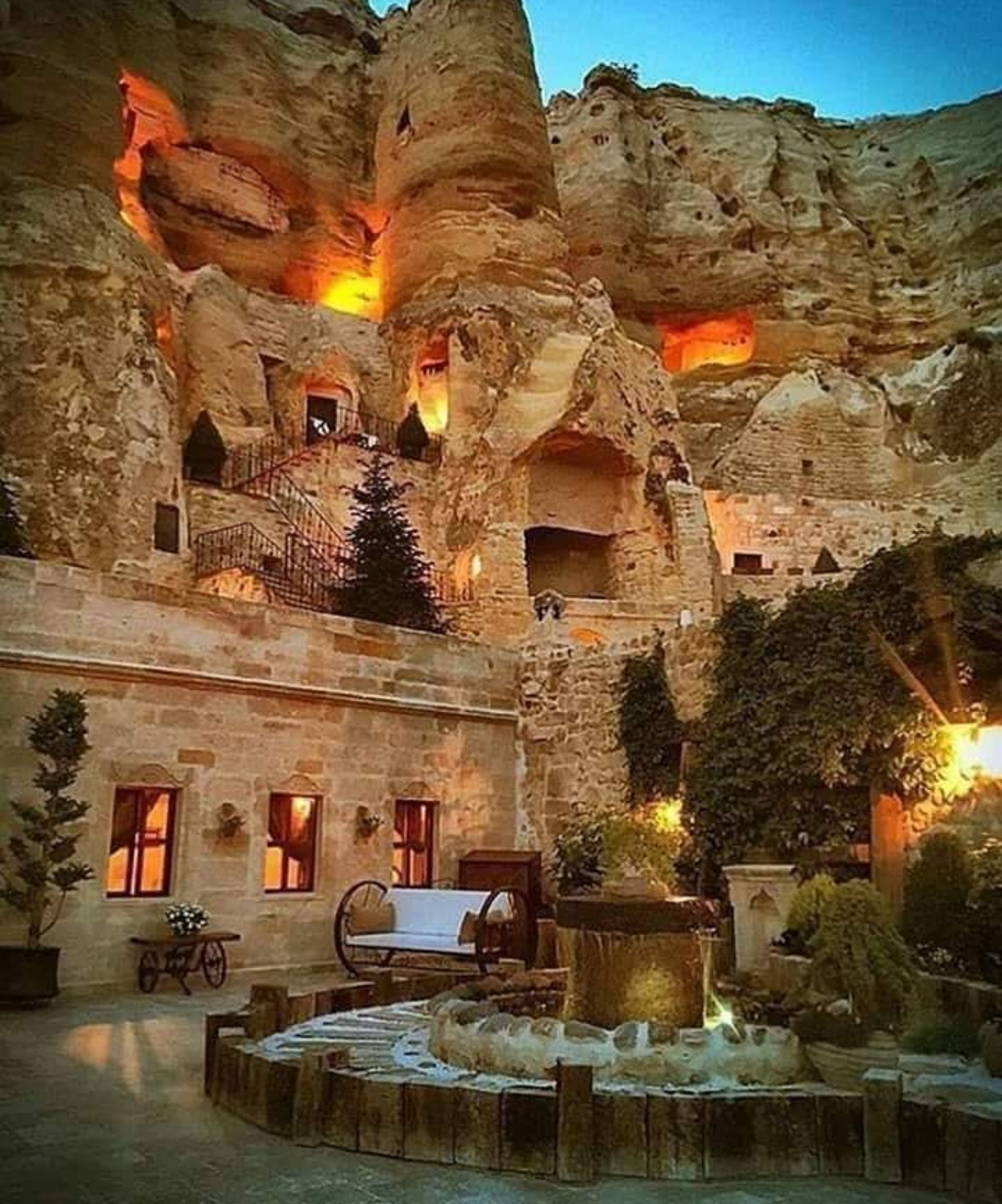CAPPADOCIA
FIRST HEWN BY WIND AND RAIN, HEAT AND COLD, THEN CARVED BY TROGLODYTES, THIS ARID PLATEAU HIDES VAST, SUBTERRANEAN CITIES AND TOWERING FAIRY CHIMNEYS
A loud hiss breaks the silence, as the pilot fires up the burner. You drift upwards, passing cliffs tinged orange by the rising sun. The ground is covered by a patchwork of snow. To avoid the
crowds you’re celebrating the New Year in this wintry wonderland. But it’s bitterly cold. You draw your coat closer around your body, and pull the edges of your hat down over your ears.
When the Arabian Plate rammed into the Anatolian Plate around 30 million years ago, the pressure kick-started volcanic activity.
The chain of erupting volcanos smothered the area in a thick blanket of ash, which solidified into tuff. In places, this was overlaid by a layer of harder
volcanic rock.
The 300-sq-km region of Cappadocia sits on a high plateau in the centre of Turkey, far from the balmy infl uence of
the sea, so summers are very hot and winters very cold. These extremes expand and contract rock time and again. Gradually, the softer tuff was worn away by this weathering and water
erosion, leaving distinctive geological formations such as the towering ‘fairy chimneys’.Subterranean CitiesMany of Cappadocia’s natural wonders became man-made wonders when troglodytic people moved into the area, carving out homes and chapels in the soft rock of cliffs and towers. They even excavated whole underground cities as refuges from marauding invaders. There are believed to have been 36 of these subterranean cities, but very few have been excavated. Derinkuyu, meaning
‘deep well’, was the largest, built around the 7th to 8th centuries BC. Housing an incredible 20,000 people, it was split over eight levels, stretching
60m underground, and also had stables, wells, churches and storage vaults. Ventilation shafts supplied fresh air to even the deepest of rooms, while enormous millstones were rolled across entrances to seal off the city. It was connected with other underground cities through kilometres of tunnels.





Comments
Post a Comment